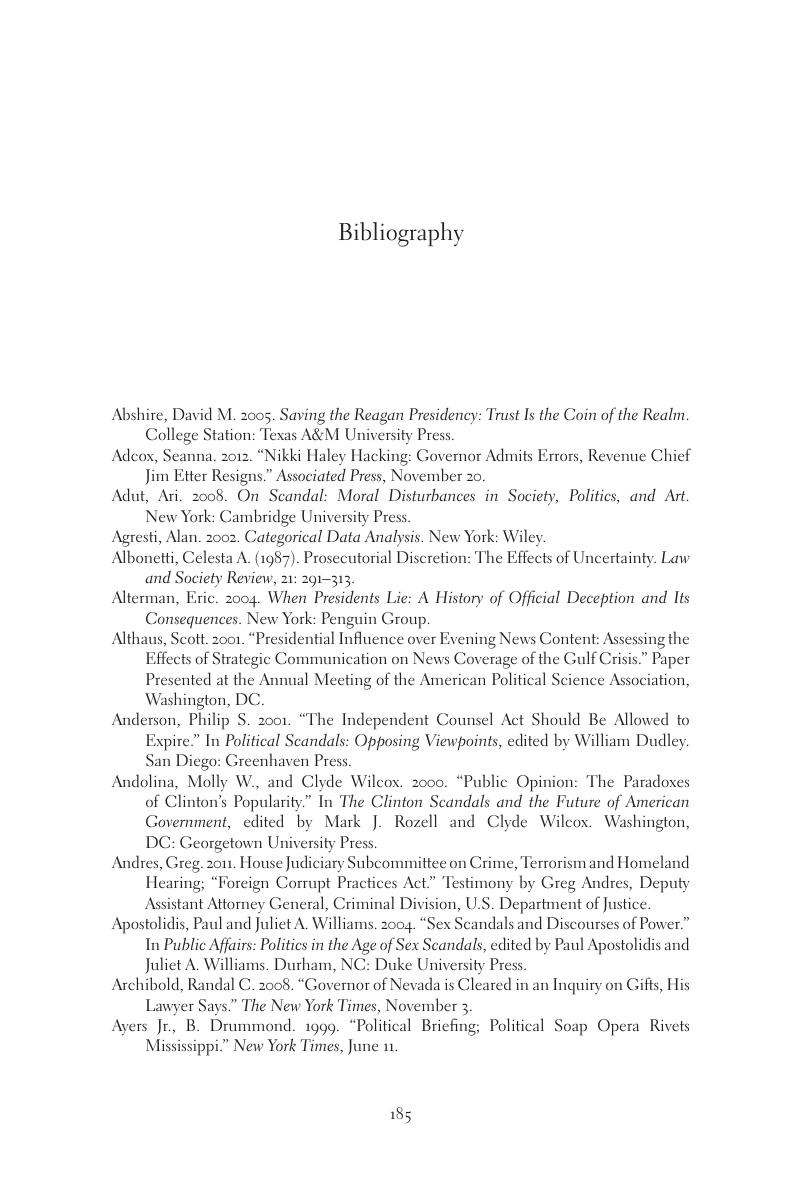Book contents
- The Institutional Effects of Executive Scandals
- The Institutional Effects of Executive Scandals
- Copyright page
- Dedication
- Contents
- Preface
- Introduction
- 1 Studying Scandals
- 2 Strategic Decisions
- 3 The Institutional and Political Dynamics of Political Survival
- 4 The Effect of Scandal on Executive Action and Policy Selection
- 5 The Effect of Scandals on Executive-Legislative Relations
- 6 Scandals and Charges of Corruption
- 7 The Impacts and Implications of Executive Scandals on the American Political System
- Notes
- Bibliography
- Index
- References
Bibliography
Published online by Cambridge University Press: 05 May 2015
- The Institutional Effects of Executive Scandals
- The Institutional Effects of Executive Scandals
- Copyright page
- Dedication
- Contents
- Preface
- Introduction
- 1 Studying Scandals
- 2 Strategic Decisions
- 3 The Institutional and Political Dynamics of Political Survival
- 4 The Effect of Scandal on Executive Action and Policy Selection
- 5 The Effect of Scandals on Executive-Legislative Relations
- 6 Scandals and Charges of Corruption
- 7 The Impacts and Implications of Executive Scandals on the American Political System
- Notes
- Bibliography
- Index
- References
Summary

- Type
- Chapter
- Information
- The Institutional Effects of Executive Scandals , pp. 185 - 204Publisher: Cambridge University PressPrint publication year: 2015



